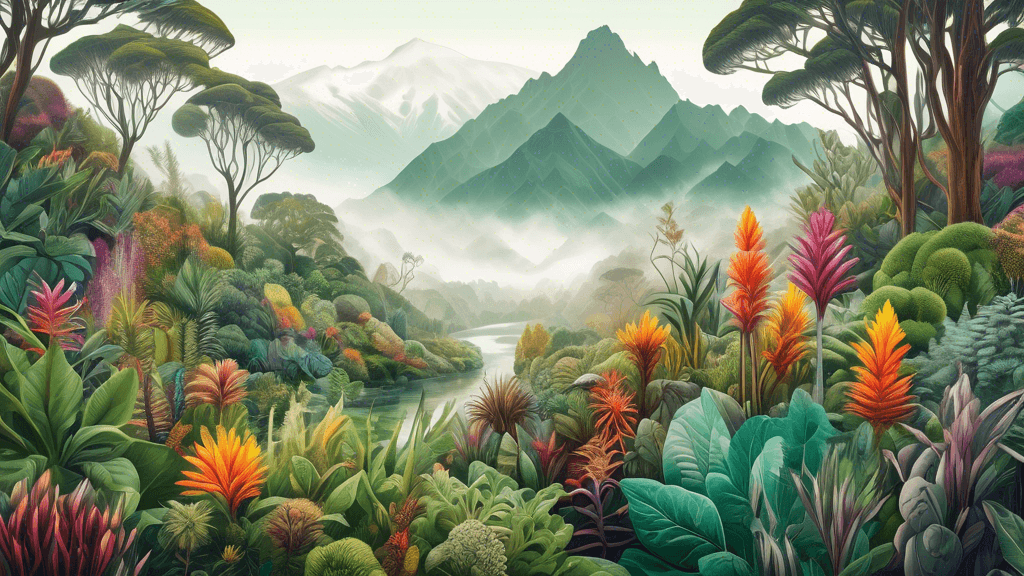
Capturing Adaptation: Photographing New Zealand's Flora Amidst Climate Change
Share
The Critical Role of Photography in Documenting Climate Change Impact on New Zealand's Flora
As the curtains of climate change draw wider, the spotlight shines on a critical yet often overlooked aspect: how plants are adapting to these shifts. New Zealand, with its unique and diverse ecosystems, presents a vivid tableau of biological adaptation. Professional and amateur photographers alike are capturing these changes, providing both a record and a revelation of how deeply global warming affects the natural world. But what does this mean for the country, known for its lush landscapes and rich biodiversity? And how does photography not only document but also help fight against these environmental changes?
Understanding the Photographic Lens on Flora
Photography serves as a powerful tool to communicate the nuanced stories of climate change—a visual chronicle that can evoke a deeper public understanding and response. When photographers capture the gradual changes in plant life, these images can stir public and scholarly attention alike. They force us to confront the imminent realities faced by these silent sufferers of climate change—the flora.
The Shifts Amongst the Green: What Photography Reveals
Recent photographic documentation has illustrated several significant shifts within New Zealand's flora. These include:
- Altered blooming periods in flowers, which can disrupt local ecosystems.
- Shifts in the ranges of certain plant species as they adapt to temperature changes.
- Increased plant diseases and invasive species proliferation, provoked by warmer climates.
Each photograph of a blooming flower not only captures a moment of beauty but also tells the story of adaptation and survival. By documenting these shifts, photographers are contributing invaluable data to environmental scientists and conservationists.
Challenges in the Field
Documenting these changes is not without challenges. Photographers must navigate:
- Rapid environmental changes that require constant vigilance and frequent visits to the same locations to accurately document shifts.
- Technical challenges in capturing plants under varying and often difficult lighting conditions.
- The need for heightened awareness and sensitivity to the environment to avoid causing harm while capturing images.
Despite these challenges, the commitment to documenting flora through photography remains unwavering, driven by a deep-seated respect for nature and a desperate urgency to address climate change.
Voices from the Field
Notable environmental photographers and conservationists have voiced their perspectives on the role of photography in environmental conservation. As famed conservation photographer John Smith states, Every image we take of the natural world should serve as both a reminder and a call to action. A reminder of what we stand to lose and a call to action to preserve it. This sentiment echoes among photographers specializing in botanical subjects across New Zealand.
The Bigger Picture: Photography for Conservation
The implications of using photography for conservation are profound. Beyond the artistic and documentary aspects, these photographs can influence policy decisions, conservation strategies, and public awareness. Images can be particularly potent in:
- Supporting scientific research with visual evidence.
- Enhancing public engagement and education by showcasing the direct impact of climate change.
- Guiding conservation efforts by detailing the needs and responses of species to climate shifts.
How You Can Contribute
Engagement doesn't need to be professional or large scale. Here are a few ways individuals can contribute:
- Using photography to document local flora and sharing these images along with insights on social platforms to raise awareness.
- Participating in citizen science projects that focus on tracking changes in plant life.
- Supporting or initiating local conservation projects that benefit from photographic documentation.
Whether you are wielding a smartphone or a professional camera, each image contributes to the broader understanding and advocacy for conservation efforts.
Conclusion: Capturing More Than Images
Photographing New Zealand's flora amidst climate change is about more than just preserving memories; it's about inspiring change and catalyzing action. Each frame not only captures a moment in time but also highlights the resilience and vulnerability of nature. As environmental enthusiasts and photographers, our role spans beyond observers to active participants in the conservation narrative.
Are you ready to be part of this vital movement, capturing and sharing the unfolding story of our natural world? Let your images speak for the trees, for the flowers, and for the future of our planet.





